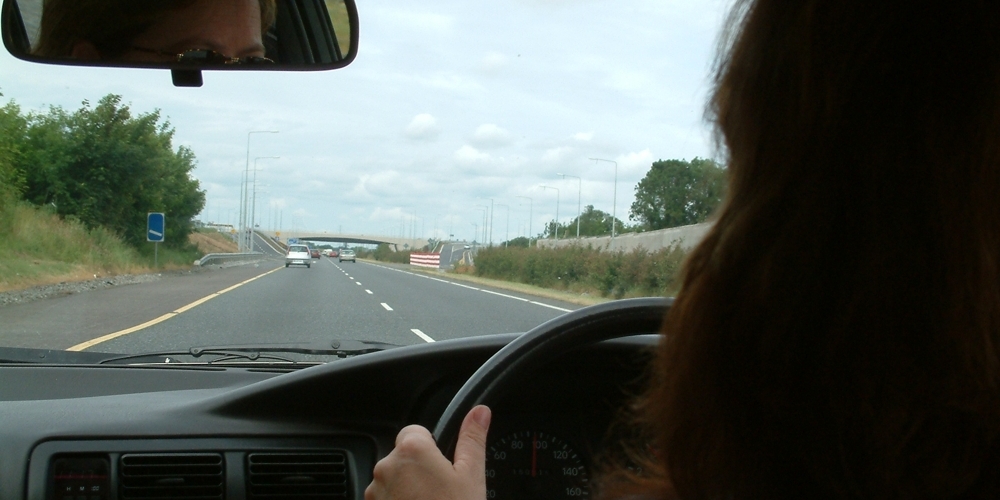



You will find that this page repeats information from the previous page - but in 3x slightly different contexts. The information will help ensure you fully understand this aspect of route planning.
Crossroads:
A specific crossroads lesson might come after a learner has mastered the controls and covered left and right turns approaching an emerging.
A learner might have encountered crossroads earlier in training during initial junctions lessons because of the constraints that an instructor's working area placed on route planning. But if this were the case, the crossroads aspect of the junctions would not be the main lesson focus; while it would have been mentioned, the instructor would be taking a high level of responsibility by guiding the learner (with the crossroad element).
If you were to survey driving instructors, you might be surprised to find that some, perhaps many, learners never actually do a specific crossroads lesson. If they do, it will often come after they have been introduced to moderate traffic, perhaps after something between four and ten hours of training. Their first 'crossroads lesson' will be on moderately busy roads - the equivalent of an 'intermediate route'; this adds unnecessary pressure.
Remember that we suggest that each lesson subject should have its own 'nursery' route, even if the learner has already mastered moderate or busy traffic.
In this crossroads example, if the learner has to deal with 'busier' traffic, they will not be able to give their full attention to the crossroad routines. With this in mind, it would be better to return to quieter roads for the first crossroad lesson (or mini-lesson) and then transfer the newly learned skill to the busier situations when the routines have been mastered.
Start each new subject on a relatively quiet route to allow the learner to concentrate fully on the methodology - when the routines are mastered, move to a busier or more challenging route.
Dual-carriageways:
Dual-carriageways can be extremely dangerous, far more so than motorways, especially where they have 70 mph speed limits. They can have traffic emerging from T-junctions, cyclists, pedestrians, traffic lights, roundabouts and many other hazards not found on motorways.
It would not be wise to introduce a learner to dual-carriageways until they are reasonably proficient at dealing with traffic and practising on 'test-standard' routes.
But the fact that a learner is dealing with busy traffic does not mean they are ready for a busy dual-carriageway.
They might cope, but there is a higher risk if thrown 'in the deep end'. I refer to my earlier statement (in the introduction): "The quickest way to build confidence and competence in any field is to gain early and repeated success."
If you want to 'guarantee' success on the dual-carriageway (or with any other subject), it needs its own dedicated 'nursery' or 'topic introduction' route. By starting with an 'easy' dual-carriageway, you reduce distraction, allowing the learner to focus on the core subject, increasing the chance of success and confidence.
It might not be easy to find a quiet dual-carriageway! Dual-carriage ways tend to be busy roads. However, you can tackle the lesson at a quiet time – perhaps a Sunday morning or quiet evening.
When finding a 'quiet time' or 'easy road' is impossible, you could use a 'learner as teacher' (reverse-role) demonstration approach where you drive, but the learner makes the decisions and guides you.
Motorways:
Motorways are very similar to dual-carriageways in terms of route planning. However, please remember that you are not allowed to take your customers on motorways until you are fully qualified.
This example is taken from my own experience many years ago. Over 30 years before learners were allowed on motorways and before Pass-Plus. Back then, many instructors thought it impossible to sell post-test motorway lessons. But the majority of my customers signed up for 2x three-hour sessions. These would be done one-to-one or with 'training buddies' (I hadn't yet invented the term' team lessons' at that time).
Having passed their driving tests, my motorway customers were reasonably proficient in all traffic conditions, and they had all driven on high-speed dual-carriageways.
However, even though my motorway customers had driven in fast-moving, busy peak-time traffic, I used to do the first motorway session early on a Sunday morning, sometimes starting as early as 7am. At that time of day, there was very little traffic, so for the first hour, we could practise the basics of entering and leaving the motorway and get used to the lanes and signs while the road was still quiet. Towards the end of the session, the traffic was a little heavier.
The second motorway session was usually mid-week and included very heavy traffic – sometimes the M25.
Next: Count the crossroads...